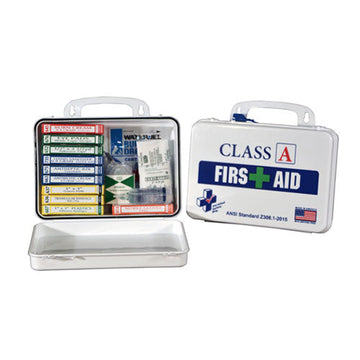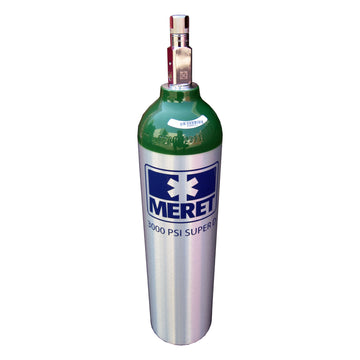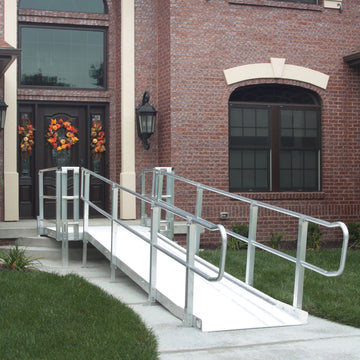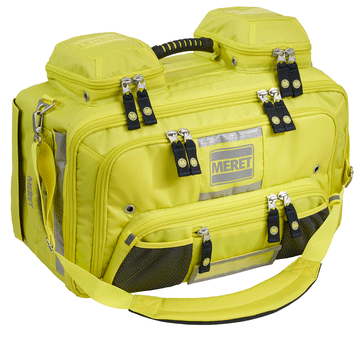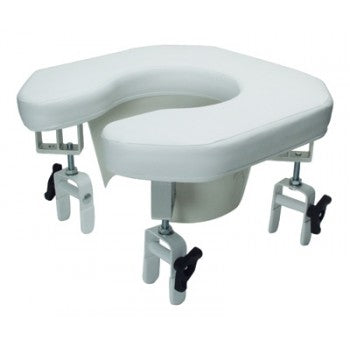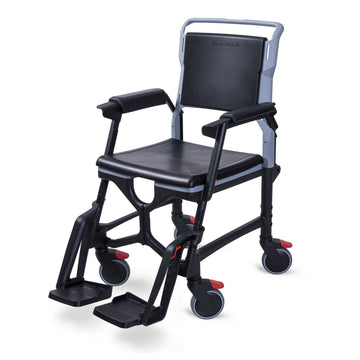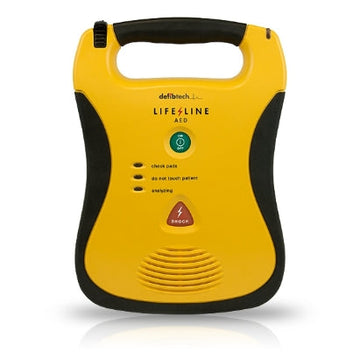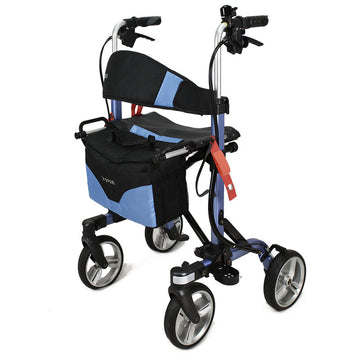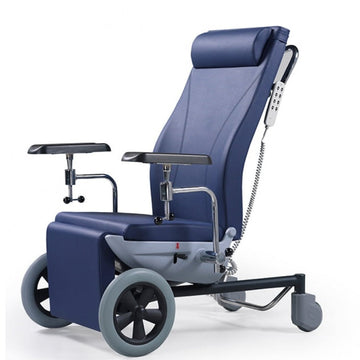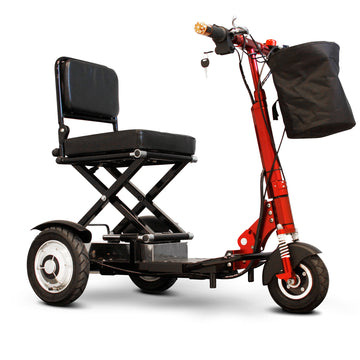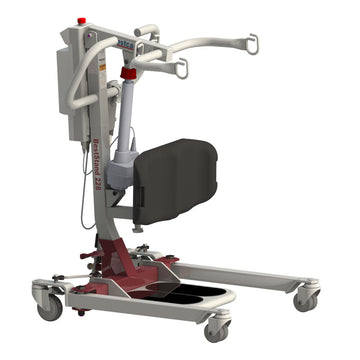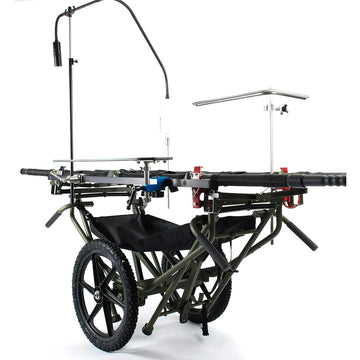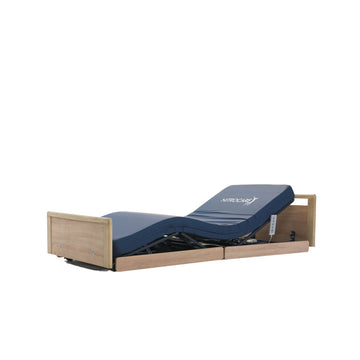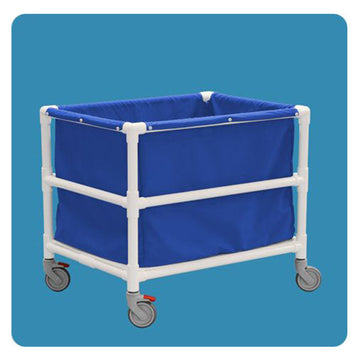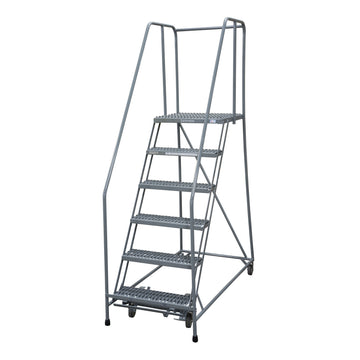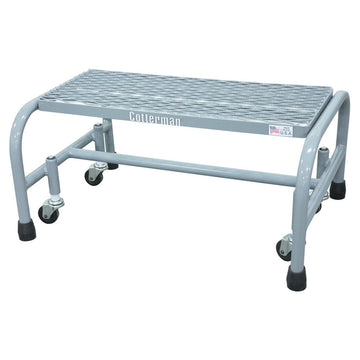Opting for a suitable home wheelchair is undoubtedly vital and plays a significant role in providing mobility. There are various ramps, and different factors should be kept in mind while choosing the right ramp, which means it takes time to choose the right ramp for one's needs. This complete guide offers precise details and helps you to choose the perfect wheelchair ramp for your home and more.
Types of Wheelchair Ramps
Depending on their use, you can choose from different types of wheelchair-accessible ramps. Some key facts about them follow.
Portable Ramps
These portable, foldable ramps are perfect for occasional use and can be carried anywhere easily. They are ideal for temporary applications or providing access to cars and other short-lived structures.
Threshold Ramps
These are small ramps used to traverse minor height differences (like a door threshold or a two—to three-inch step-up). They are low-grade, softened transitions in item-embedded (like tile floor covering) or strip-filled stops and additional forms typically made from rubber, steel bars, or strips of wood.
Modular Ramps
Customizable and adjustable, modular ramps can be combined to achieve different sizes. They can be used for temporary work or become your permanent solution, constantly growing and able to change as needs dictate.
Permanent Ramps
Made of materials such as concrete or aluminum, permanent ramps are designed to be installed in a fixed location for long periods. They are perfect for consistent, ongoing accessibility needs in a home.
Folding and Telescoping Ramps
These ramps are space-efficient because they can be folded or telescopically slid open. They can be used for casual wear and are adjustable in size.
Key Factors to Consider When Choosing a Wheelchair Ramp
When choosing a wheelchair ramp, a few key points will determine whether the unit is correct for the user and the location where the user wants or needs it.
Slope and Length
Fingers crossed that there is a low-angle ramp! The Americans with Disabilities Act (ADA) recommends a slope no steeper than 1:12, meaning for every inch of height, the ramp should be at least one foot long. This can be acceptable on short ramps to provide safety and access for all users at a residence; however, we always recommend maximizing ramp run lengths whenever possible.
Width of the ramp this depends on how much space you have available and could rely on whether previous work has taken place. The sample height is 150mm, but a minimum measurement must always be taken in each case. So, for instance, a rise of 24 inches would necessitate an ADA-compliant grade ramp with the length being equal to that rise, i.e., 24 feet.
Weight Capacity
One is that it should be strong enough to hold your weight and your wheelchair's weight. Ramps typically have a weight limit indicated, which should be compared to the total weight of the wheelchair (unoccupied) plus any person or equipment used on it.
Width
Ensure that the ramp is wide enough for a wheelchair to match comfortably. The ADA dictates a 36-inch minimum width for public ramps; however, when ramping specifically for use at home, it should be as wide as the widest wheelchair that will use it.
Material
Different materials are used to make wheelchair ramps: Aluminum, Steel, Wood, and Rubber. Both materials are suitable in their own right;
Aluminum - Aluminum is light, challenging, and resistant to corrosion. It is Great for portable and modular ramps.
Steel - Practically indestructible, but significantly heavier and can rust if not correctly protected.
Wood - Wood Aesthetic and can be made to match the home's exterior, but needs maintenance 1 Preventing Rot & Decaying.
Rubber - Flexible and with a non-slip construction, rubber is excellent for threshold ramps.
Surface Texture
On a related note, whatever tire width you go with has to have the appropriate tread for your environment, too, so the deck is not dirty or icy in winter. Use ramps that have rough surfaces, grip tape, or a built-in non-slip functionality.
Installation
Other ramps are professionally installed, while others can be established by the owner. Installation Permanent and modular ramps might require more complex installation than portable or threshold ramps. Are you physically and mentally capable of installing the ramp yourself, or do you need to hire a professional?
Location and Environment
Think about the location where the ramp will be used (inside/outside). Outdoor ramps must be durable and endure their surrounding environment. Finally, consider the aesthetic and layout of your home with a ramp.
User Needs
Think about the requirements and abilities of that particular wheelchair user. This decision will depend on factors such as your upper body strength, ability to navigate slopes, and whether you have assistance.
Steps to Choosing the Right Wheelchair Ramp
Following are the steps by which you can choose the right wheelchair ramp for your home:
Evaluate How Accessible Your Home Needs to Be:
Locating Entry Points Identify the areas requiring ramp access. Check the height of each step or threshold and your space for the ramp.
Determine the Ramp's Purpose:
Determine if the ramp will be used permanently, semi-permanently, or occasionally, and decide on portability to travel around.
Measure and Calculate:
Determine the height of the step or threshold. Calculate the RAMP LENGTH, which is required according to the slope. Space must also be available to allow the entire length of the ramp.
Choose the Material:
Choose your ramp material according to durability, weight, and maintenance needed. The Place Where the Ramp Will Be Used (Indoor Or Outdoor).
Weight Capacity & Width Check
Check that the ramp can manage the weight of both the chair and the user and is broad enough for smooth access.
Check the Surface Texture and Safety Features:
Ensure the ramp includes a non-slip surface and safety measures such as handrails or ledges if necessary.
Installation/ Maintenance:
Determine whether you can install the ramp yourself or if professional help is necessary. Consider the durability of materials when planning your ramp.
Top Recommendation on Wheelchair Ramps
Our best-selling wheelchair ramps are highly recommended for their exceptional quality and reliability. These ramps are the top choice for ensuring smooth and safe access.
1. Rampit USA 48" Wide Independence Series Residential Handicap Access Ramp
Perfect for anyone with mobility challenges, this durable, rust-free aluminum ramp offers a slip-resistant surface for safe and secure movement. Enjoy lifelong freedom and peace of mind with a ramp designed to last a lifetime with minimal maintenance.
2. Roll-A-Ramp 30" Wide Modular Ramp
Perfect for homes or businesses, this modular ramp system can be configured to any length, from 5′ to 30′, offering a flexible and portable alternative to permanent wooden ramps. Ideal for wheelchairs, walkers, and scooters, it’s easy to split into sections and doesn’t require a building permit, making it a convenient solution for any accessibility need. Add handrails or create angled turns with platforms to customize the ramp to your exact requirements.
3. National Ramp Approach Series Rubber Threshold Ramp
Customizable, durable solution for anyone needing safer, easier access in their home. Ideal for those with mobility challenges, these nearly indestructible rubber ramps come in various heights, with options to extend up to 5”. Perfect for indoor or outdoor use, they help prevent falls and provide essential support, ensuring a more comfortable and accessible living environment. Affordable and versatile, these ramps are a great addition for any home.
4. Rampit USA 54" Wide United Series Commercial Handicap Access Wheelchair Ramp

Perfect for high-traffic areas like businesses, schools, and churches. Designed for safety and durability, this all-aluminum modular ramp features a slip-resistant surface, rust-free materials, and smooth, continuous handrails for secure travel. It’s easy to install with minimal tools, requiring no permanent changes or permits, and is built to withstand heavy use without maintenance. Ideal for ensuring accessibility and safety in any commercial setting.
5. Rampit USA 39" Wide Wood Aluminum Wheelchair Ramps
These ramps feature a slip-resistant surface, adjustable modular design, and the choice of wood or aluminum handrails. Easy to install and ADA-compliant, they meet all building codes and come with a one-year warranty. Ideal for residential applications, these ramps offer both functionality and aesthetic appeal, with custom fabrications available at no extra charge.
Installation and Maintenance Tips
It is of utmost importance to install and maintain your wheelchair ramp properly so that its durability and safety will be long-lasting.
Professional Installation:
Professional installation is recommended for permanent ramps to ensure they comply with safety codes and remain firmly bolted down. First, the installation should be done by an expert, i.e., a pro, thereby avoiding misalignment and ensuring that the surface is not unsafe.
Regular Inspections:
Regular ramp inspections are conducted to check for wear and malfunction and to see if the ramp is still stable. Rub the surface to free it from debris and keep a grip. Most issues are spotted ahead of time during regular inspections.
Weather Protection:
If this is outdoors, you should protect the ramp. (Decay will eventually get to it.) Choose weatherproof coatings and materials to prevent rusting or corrosion. Covering or protecting treatments can extend the ramp's life expectancy so that it retains its same good looks.
Adjustments and Repairs:
Take care of problems before they cause accidents. Tighten loose screws, replace broken pieces, and make sure their ramp is secure. A well-maintained ramp is a safer and more reliable piece.
Handrails and Barriers:
Inspect handrails and edge barriers to ensure they are accessible, intact, and strong enough. Make sure to check these safety features routinely and that they are correctly attached.
Final Thoughts
Several factors must be considered when choosing the right wheelchair ramp for your home. These include the style, slope, length, or weight capacity it carries, the width and material used in its construction, surface texture, installation needs, and user preferences. Read the other article to see what variables are involved in picking out a ramp and how to choose one for your wheelchair users.
Recall the wheelchair live edge sanding machine that is most suitable. Purchase a ramp ideal for your everyday needs, attach it securely, and look after it carefully to ensure quality use for all users.


